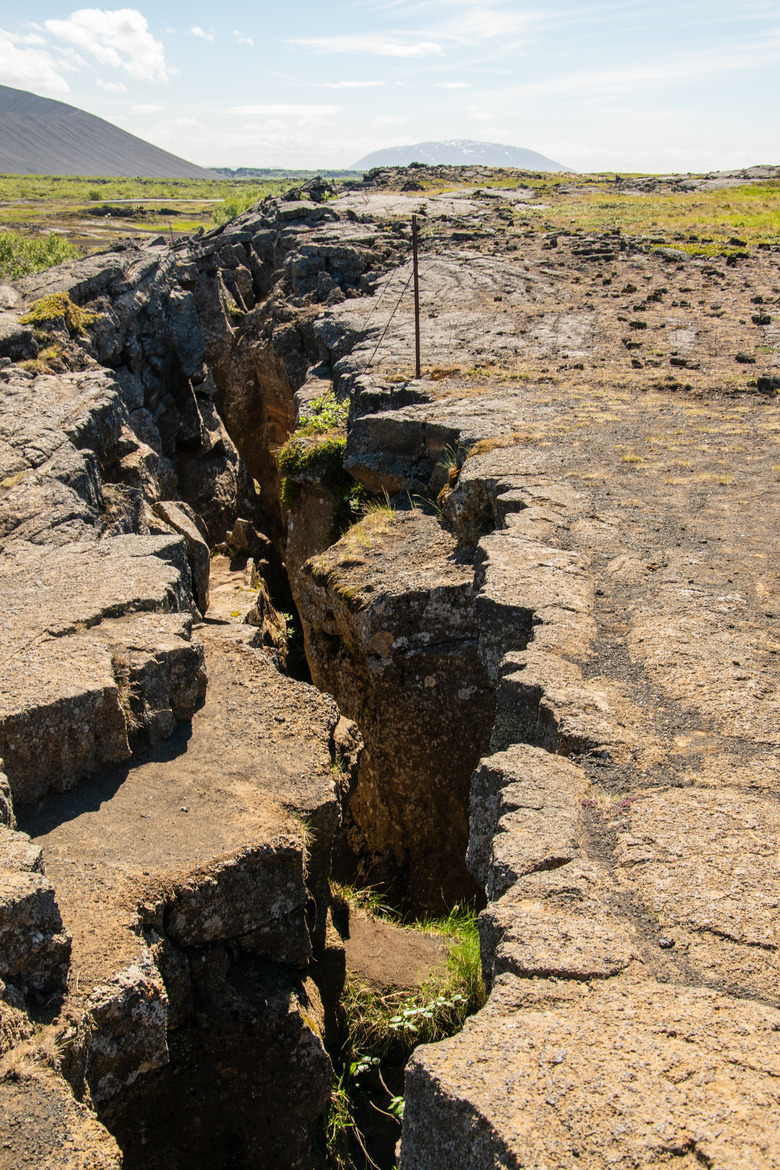Cause Of Shifts In Earth's Continents
Why do continents move and drift apart? Over time and after intense study, geologists have hypothesized that shifts in the Earth's continents are caused by plate tectonics. In the early 1900s, a scientist named Alfred Wegener published a continental drift theory book, which was at the time rejected as pseudoscience. Since that time, Wegener has become known as the father of continental drift theory, and scientists have continued to build on and refine his ideas to explain how previous supercontinents have pulled apart and moved to become arranged in the way that they are today.
Arrangements of Previous Supercontinents
Arrangements of Previous Supercontinents
Geologists have determined that there have been several previous supercontinents over the course of Earth's 4.5-billion-year history. One supercontinent, known as Pangaea, formed between 300 and 100 million years ago during the Permian period.
The continents came into their current arrangement over the course of millions of years and they continue to move through the present day. During the Triassic period, which was roughly 200 million years ago, there were two supercontinents: Laurasia and Gondwanaland.
As the continents shift and change locations, so do the Earth's oceans. The edges and shapes of the continents, along with the fossil record, help scientists determine how the land masses and oceans on the planet were distributed at different points in history.
Continental Drift Theory
Continental Drift Theory
Alfred Wegener's theory about continental drift was not accepted during his lifetime, but it is now regarded as the prevalent explanation for the cause of shifts in the Earth's continents. Wegener lived from 1880 to 1930, and his hypothesis began to gain traction in the 1950s, when other scientists discovered evidence to support his ideas.
Based on the observation that the seven present-day continents fit together like the pieces of a jigsaw puzzle, Wegener proposed the idea of continental drift. He hypothesized that the mechanism causing continental drift was related to the rotation of the Earth or sea-floor spreading.
Wegener's explanations for the mechanisms causing continental drift were eventually replaced by the concept of plate tectonics, which remains the prevailing theory. Advanced instruments and equipment make it possible for geologists to measure continental drift directly today.
Evidence Supporting Continental Drift
Evidence Supporting Continental Drift
There are several sources of evidence supporting the theories of plate tectonics and continental drift. One of the main sources is the fossil record, which helps us understand both when various species lived on the planet and where they existed. Fossils of the same extinct species found on different continents supports the idea that these land masses were once closer together.
Similarly, belts of rock of the same type have been discovered on continents that are now separate. Likewise, chains of mountains that are now on different continents were once continuous, running across one combined land mass.
Further evidence for continental drift has been discovered in the marks in the land left by glaciers, which are called glacial striations. Paleoclimatologists, or scientists who study prehistoric climates, have found glacial striations that indicate that South America and Africa were once united as one land mass.
Shifting Tectonic Plates
Shifting Tectonic Plates
Tectonic plates are pieces of the Earth's lithosphere, which is composed of the crust and uppermost part of mantle of the planet. These pieces float on the asthenosphere, which is another layer of the Earth's mantle. Shifting just about an inch per year, these plates move locations over the course of millions of years.
Impacted by changing temperatures in the layers of the planet, tectonic plates move over and under one another, causing shifts in the locations of the continents over time. The movement of tectonic plates also causes changes in the ocean floor, and volcanoes often form where one tectonic plate meets another.
Cite This Article
MLA
Sloane, Christina. "Cause Of Shifts In Earth's Continents" sciencing.com, https://www.sciencing.com/cause-shifts-earths-continents-17662/. 20 October 2021.
APA
Sloane, Christina. (2021, October 20). Cause Of Shifts In Earth's Continents. sciencing.com. Retrieved from https://www.sciencing.com/cause-shifts-earths-continents-17662/
Chicago
Sloane, Christina. Cause Of Shifts In Earth's Continents last modified August 30, 2022. https://www.sciencing.com/cause-shifts-earths-continents-17662/
